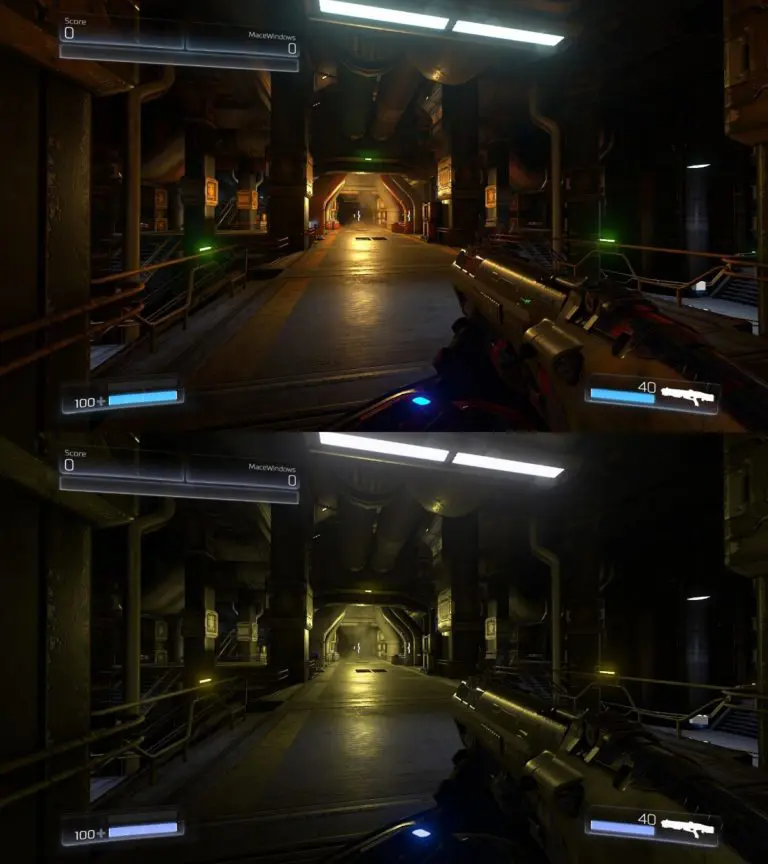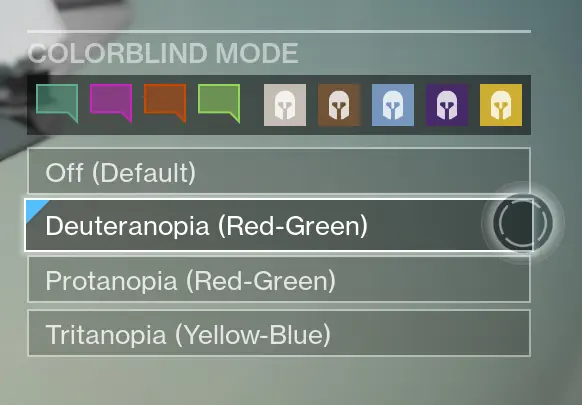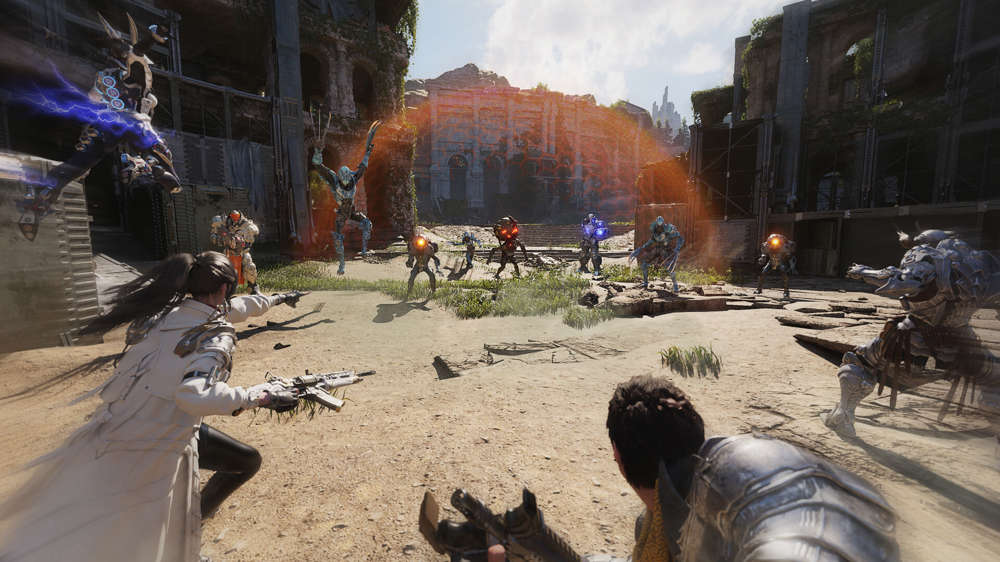Is Colour-Blind Mode An Exploit?
An investigation into if using colour-blind mode when the user has no visual impairments or colour-blindness is an exploit.

Katie Memmott
11th Oct 2020 18:30

Colour-blind mode can be a godsend for those players with colour-blindness or visual impairments in video games, allowing them to correctly see everything from ammo numbers to text pop-ups, thanks to the colour-change effects put in place by setting the Video mode to colour-blind.
There are several different types of colour-blindness, and all need to be taken into account when developing or playing a game.
The most common of the affliction is red-green colour blindness, where the colours red and green are hard to differentiate. Deuteranomaly is the most common of these, and the least severe. Protanomaly makes red look greener, and protanopia and deuteranopia are the most severe, meaning the person is unable to tell the difference between green and red at all.
As green and red are the signature colours in games to do with fighting/shooting, as well as enemy spotting/pinging and ADS/using the scope, this may be where a colour-blind mode is most useful.
There is also blue-yellow colour blindness, where tritanomaly makes it difficult to distinguish between blue and green, and between yellow and red. The more severe of the blue-yellow colour blindness is tritanopia, which not only means the person cannot tell the difference between blue and green, purple and red, and yellow and pink, but that the colours are also muted.
Complete colour blindness is uncommon, but the effects include being more sensitive to light and bright colours, and not seeing colour at all.
So, is using colour-blind mode when the user has no visual impairments or colour-blindness an exploit? Some think - yes.
The Positives of Colour-Blind Mode
In an effort to make gaming accessible for everyone, a ton of well-known titles already include a colour-blind mode, which has helped users with accessibility needs massively. These include several Call of Duty titles, Battlefield, the Assassins Creed series, League of Legends, and more.
An article on gamersexperience.com explored the different types of colour-blind modes that were offered by these games, and even gave examples of how they change the colour scape of the game and its controls/UI.
This screencap from DOOM’s colour-blind mode shows how the deuteranopia mode, muting the colours to make it easier for the user who has trouble differentiating between red and green. In a scenario where a non-colour-blind person uses this mode, there are no bright colour distractions, meaning the enemy will be easier and quicker to see.
 DOOM Colourblind Mode
DOOM Colourblind Mode
Destiny also provides several colour-blind modes, changing the hues dramatically.
 Destiny Colourblind Mode
Destiny Colourblind Mode
It’s plain to see that adding in colour-blind modes is helpful for the community at large, and many users are still asking for them for games (such as Among Us) which haven’t yet implemented that accessibility.
The fact that many AAA game companies choose to add colour-blind modes is a step in the right direction. But what about those who exploit these modes to gain unfair advantages? Well, they do exist, and some people aren’t happy about it.
Does Colour-Blind Mode Make A Game “Easier” For The Average Player?
Several atypically-sighted gamers have noticed the colour-blind modes could make the game more comfortable for them to play too – but is that an unfair advantage when the option is available to everyone?
It can be compared to taking steroids – some people need them to function, but others use them and get a competitive advantage. It’s a tool for others to catch up, not to get ahead. It’s worth noting that a colourblind mode doesn’t give colourblind people an advantage.
Lizzy Garcia of But Who Tho? Podcast made her point on this very clear.
Accessibility features are not meant to be cheats, they are meant to be equalizers.
She goes on to say in her article that “calling accessibility cheating is not only false, but it’s also extremely harmful. Doing so is a form of gatekeeping that hurts disabled players and constantly forces them to validate their place in the gaming community.”
The r/OverwatchUniversity subreddit featured an interesting post from a user titled “New Colorblind Mode - Potential Advantage?” where one commenter noted that “my allies are highlighter yellow and the enemies are bright-ass magenta-pink. Damn right it's an advantage.”
Gamers on social media have also said their piece on whether applying the colour-blind mode should be considered cheating.
Designers design games with a creative vision of it being played in that way; for example, a horror game will ask you to turn down the brightness for the atmosphere they designed. The battle royale game Apex Legends want the player to be confused about where enemies are, and if you’re better at tracking, that’s a skill, and that should be a skill decider - and not something that can be helped by hardware or settings.
Again, this is not applicable for every colour-blind mode, or even every game. The game needs to have certain properties for it to even matter – single-player is probably fine, but multiplayer is where it may become an exploit, where opponents may be outlined, or a brighter colour, or the landscape becomes easier to spot enemies through - that’s where it’s a problem.
A post on r/FortNiteBR showed a user implementing the protanope colour-blind mode to see through the storm in Fortnite, which otherwise would not be visible.
So what is the resolution?
Unfortunately, there is no real way to solve this, unless you have to submit a colour-blind test to play the game (which would be rather weird and ableist in itself).
Turning on a colour-blind mode when you are not colour-blind is just one potential “exploit” when it comes to gaming (specifically online multiplayer). Other things could be considered unfair, from having top of the range mice and keyboards, or bigger crisper monitors.
For now, people will have to rely on the morality of their fellow players, and hope they aren't using colour-blind mode as an exploit to gain an unfair advantage.
Images via Epic Games | ZeniMax | Bungie

About The Author
Katie Memmott
Katie is the former Sub Editor and Freelancer Coordinator at GGRecon.



























